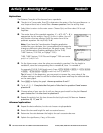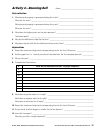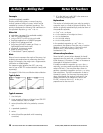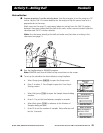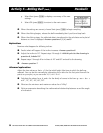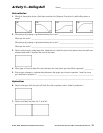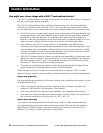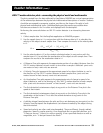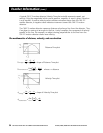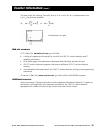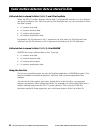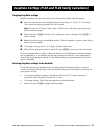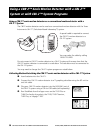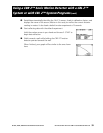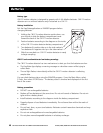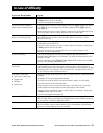
34 GETTING STARTED WITH THE CBR 2™ SONIC MOTION DETECTOR © 1997, 2004, 2006 TEXAS INSTRUMENTS INCORPORATED
Teacher Information
(cont.)
A typical CBR 2™ motion detector Velocity-Time plot actually represents speed, not
velocity. Only the magnitude (which can be positive, negative, or zero) is given. Direction
is only implied. A positive velocity value indicates movement away from the
CBR 2™
motion detector; a negative value indicates movement toward the
CBR 2™ motion
detector.
The
CBR 2™ motion detector measures distance only along a line from the detector. Thus,
if an object is moving at an angle to the line, it only computes the component of velocity
parallel to this line. For example, an object moving perpendicular to the line from the
CBR 2™ motion detector shows zero velocity.
The mathematics of distance, velocity, and acceleration
Distance-Time plot
V
average
=
@
d
@
t
=
d
2
N d
1
t
2
N t
1
= slope of Distance-Time plot
V
instantaneous
=
lim
@
t
"
0
(
@
d
@
t
) =
d(s)
dt
where s = distance
Velocity-Time plot
A
average
=
@v
@t
=
v
2
N v
1
t
2
N t
1
= slope of Velocity-Time plot
A
instantaneous
=
lim
@t
"
0
(
@v
@t
) =
dv
dt
t
1
t
2
v
1
v
2
t
1
t
2
d
2
d
1



